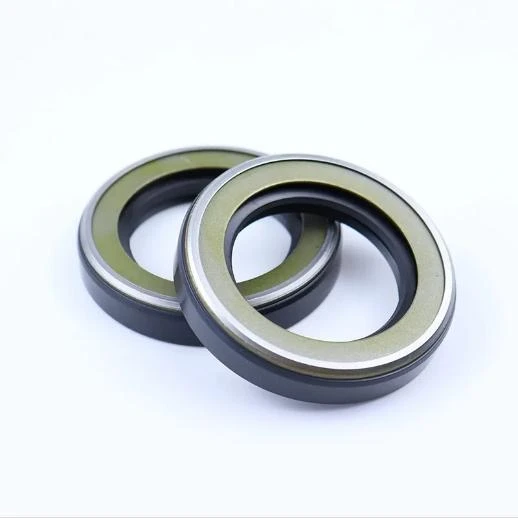nov . 10, 2024 00:20 Back to list
Hydraulic Ram Seal Kits for Optimal Performance and Maintenance Solutions
Understanding Seal Kits for Hydraulic Rams
Hydraulic rams are crucial components in various industrial applications, from construction machinery to agricultural equipment. One of the key factors determining the efficiency and longevity of these systems is the quality of seal kits used within the hydraulic rams. In this article, we will explore the importance of seal kits, the types of seals available, the common issues associated with them, and best practices for maintenance.
Importance of Seal Kits
Seal kits are essential in hydraulic rams as they prevent leaks, maintain pressure, and ensure the smooth operation of hydraulic systems. These kits typically consist of various seals, o-rings, and components that work together to create a tight seal against fluids. When hydraulic rams operate, high pressure is generated, and the seals must withstand these forces while preventing hydraulic fluid from escaping. The integrity of the seal kits not only affects the performance of the hydraulic ram but also has implications for safety and environmental compliance.
Types of Seals in Hydraulic Rams
Seal kits for hydraulic rams may include various types of seals, each designed for specific purposes. Common types of seals include
1. O-Rings These are circular seals made from elastomeric materials. They are designed to fit into grooves and provide a seal between two components. O-rings are commonly used in hydraulic applications due to their reliability and ease of installation.
2. Rod Seals These seals prevent fluid leakage along the rod of the hydraulic ram as it moves in and out of the cylinder. Rod seals are typically made from polyurethane or rubber, which provides durability and flexibility.
3. Piston Seals Located at the base of the piston, these seals function to prevent hydraulic fluid from leaking past the piston. They are crucial for maintaining the pressure needed for efficient operation.
4. Backup Rings These rings are used alongside primary seals to prevent extrusion and enhance the lifespan of the seals. They absorb the high pressure exerted on the seals, improving their overall performance.
5. Wiper Seals These are designed to keep dirt and debris out of the hydraulic system. By wiping the rod as it extends and retracts, wiper seals contribute significantly to the longevity of the seal kits.
Common Issues with Seal Kits
Hydraulic seal kits can face several issues that can lead to failures, including
seal kits for hydraulic rams

1. Wear and Tear Over time, seals can degrade due to repeated exposure to hydraulic fluids, high temperatures, and pressure. Regular wear can lead to leaks and reduced efficiency.
2. Contamination Dirt, dust, and other contaminants can damage seals, leading to premature failure. This is particularly the case if wiper seals are ineffective or if the hydraulic fluid is not kept clean.
3. Improper Installation Mistakes during the installation process can lead to alignment issues, stress on the seals, and eventual failure. It's crucial to follow manufacturer guidelines to ensure proper fitting.
4. Chemical Compatibility Using seals made from materials not compatible with the hydraulic fluid can lead to degradation of the seals and system failure.
Best Practices for Maintenance
To ensure the longevity and efficiency of hydraulic rams, it's essential to maintain the seal kits properly. Here are some best practices
1. Regular Inspections Regularly check hydraulic ram components for signs of wear or damage. Promptly replace any worn seals to prevent leaks.
2. Clean Environment Ensure that the working environment is clean. Use wiper seals effectively and keep the hydraulic fluid clean to minimize contamination.
3. Use Quality Materials Always choose high-quality seal kits suited for the specific hydraulic applications. Opting for OEM (Original Equipment Manufacturer) parts can provide additional reliability.
4. Follow Installation Guidelines Adhere strictly to installation instructions to avoid damaging the seals during fitting.
5. Monitor Performance Regularly monitor the performance of hydraulic systems. Early detection of issues can prevent more significant failures and costly repairs.
Conclusion
Seal kits are a fundamental aspect of hydraulic ram functionality. Understanding their types, common issues, and maintenance practices can lead to more efficient operations and extend the lifespan of hydraulic systems. By investing in quality seal kits and employing best practices, industries can minimize downtime, enhance productivity, and ensure the safe operation of hydraulic equipment.
-
TCN Oil Seal Metal Ring Reinforcement for Heavy Machinery
NewsJul.25,2025
-
Rotary Lip Seal Spring-Loaded Design for High-Speed Applications
NewsJul.25,2025
-
Hydraulic Cylinder Seals Polyurethane Material for High-Impact Jobs
NewsJul.25,2025
-
High Pressure Oil Seal Polyurethane Coating Wear Resistance
NewsJul.25,2025
-
Dust Proof Seal Double Lip Design for Construction Equipment
NewsJul.25,2025
-
Hub Seal Polyurethane Wear Resistance in Agricultural Vehicles
NewsJul.25,2025
-
The Trans-formative Journey of Wheel Hub Oil Seals
NewsJun.06,2025
Products categories
















